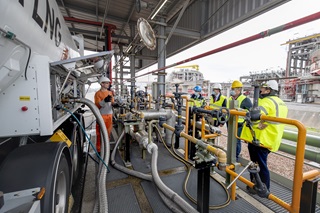
Liquefied Natural Gas is highly versatile and serves remote locations and various industries
Simply put, Liquefied Natural Gas is a colourless and odourless liquid fuel. But what LNG lacks in colour and smell, it makes up for in energy efficiency and environmental performance.
Created over millions of years from the transformation of organic materials, such as plankton and algae, LNG is made by cooling natural gas to -162°C, which means it is classed as a cryogenic liquid.
LNG is used in many business sectors within the industrial sector, road transport and marine.

Industry
LNG is often the fuel of choice for businesses in geographically remote locations. These typically include: food processing, bottling of beverages, pet food manufacture, dairy products manufacture, aggregates and asphalts.
Commercial
LNG is used widely within in the commercial sector. Especially owners of hotels and spas, have chosen LNG to heat their premises or provide hot water for their swimming pools.
Road transport
LNG is typically 10-25% cheaper than diesel, with strong environmental benefits that improve air quality in cities. LNG-powered trucks have comparable performance to diesel vehicles in terms of power, acceleration and cruising speed, but can cut CO2 by between 10% and 20%, dependent upon duty cycle and vehicle type.
Marine
With the growth of emission control areas (ECAs), LNG is also becoming an increasingly popular marine fuel. It is a proven energy source, which is affordable, performs well and offers 24% more energy output per tonne than heavy fuel oil. It is considered one of the most promising alternative fuels in the transition to clean transport in shipping.
Liquefied Natural Gas is a highly versatile fuel. Clean-burning and low carbon, LNG is an effective, tried-and-tested alternative to expensive, oil-based systems for business concerned about costs and sustainability.
times less space in its liquid form
degrees of cooling temperature
years of reserves
less NOx emissions compared to heavy fuel oil
1 Source: https://www.igu.org/natural-gas-efficient (Black & Veatch)
2 Source: https://www.eia.gov/tools/faqs